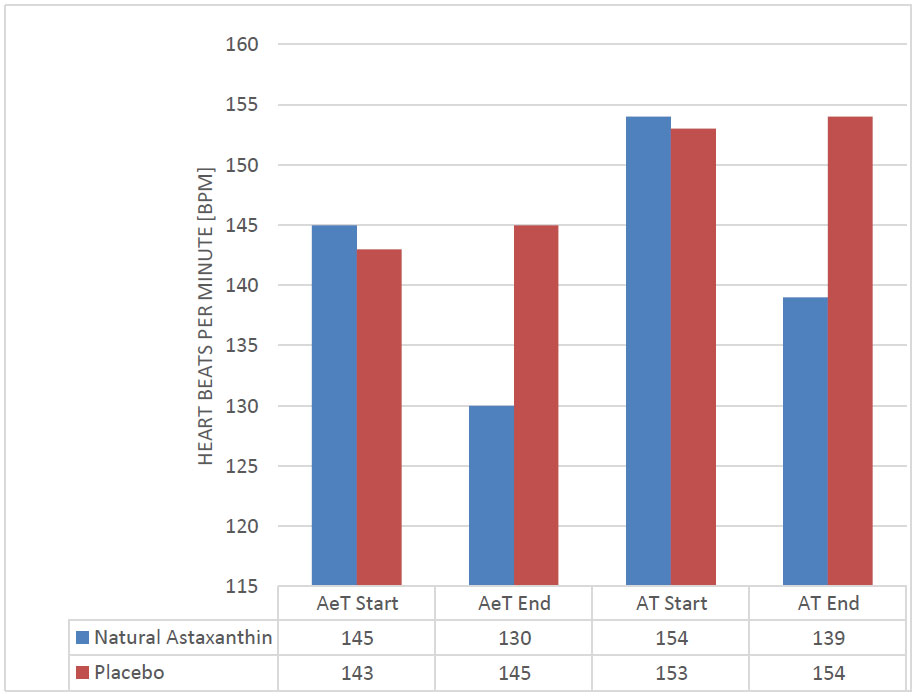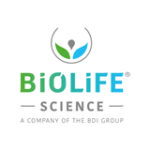Astaxanthin, the red diamond amongst free radical scavengers, supports physical and mental fitness
Natural astaxanthin has a strong inflammatory effect and is highly efficient fighting against reactive oxygen species (ROS). Astaxanthin’s power as strongest antioxidant has lately become increasingly known. Thanks to its special chemical structure, natural astaxanthin can pass the blood-brain barrier and take full effect – a property that only few compounds possess.[1] Furthermore, the blood flow within the body is impacted in a positive way by an oral intake of natural astaxanthin, which is not only of great significance for cardiovascular health but also improves oxygen and nutrient transport to/towards the human brain.[2]
A clinical study from 2019 has proven the holistic positive effect of natural astaxanthin on the psychophysiological heart-brain axis and enables new applications of the red diamond as co-therapeutic agent.[3]
1. Positive influences of natural astaxanthin on the psychophysiological hearth-brain axis
Heart and brain communicate in various ways with each other. Best known are the communication regarding the nervous system and the electrical impulses that are triggered; in this context, particularly the sympathetic and parasympathetic nervous system can be mentioned. The sympathetic nerve fibres originate in the cervical ganglions and are also termed cardiac nerves (Nervi cardiaci); they are responsible for the acceleration of the heart rate. The parasympathetic nerve fibres that are responsible for relaxation and the deceleration of the heart rate stem from the tenth cranial nerve. These nerve fibres end in a neuroplexus, the so-called Plexus cardiacus, at the base of the heart. The stimulation of the Nervus vagus as therapeutic agent for various diseases plays a central role in today’s research .[4],[5]
Most recent studies from the year 2020 addressed that heart-brain axis and analysed the significance of antioxidants like natural astaxanthin in connection with cardiovascular and cognitive health.
In this randomised, placebo-controlled double-blind study, 28 healthy probands were supplemented with a daily dose of 12mg of natural astaxanthin or with a respective placebo over 8 weeks. The results of the astaxanthin reference group were astonishing.
The probands with astaxanthin supplementation showed a significant decrease of the average heart rate at submaximal stress intensity by 10 percent compared to the placebo group. As shown in Table 1, their heart beats per minute (bpm) could be reduced significantly after an 8-week supplement at the aerobic (AeT) as well as at the anaerobic (AT) threshold. This suggests a substantial easing of the cardiovascular system.
Furthermore, there were significant improvements in the astaxanthin group regarding the evaluation of the psychological state. The parameters for tension, depression, anger, tiredness and confusion were significantly reduced and suggested an altogether positive state of mind. Natural astaxanthin, thus, influences the psychophysiological heart-brain axis verifiably positively and substantially supports the physical and mental wellbeing.[3]

Figure 1: The heart rates of the aerobic (AeT) and the anaerobic threshold (AT) were significantly lower after the supplementation of natural astaxanthin compared to PL (AeT; astaxanthin 130+17 vs. PL 145+14 and AT; astaxanthin 139+20 vs. PL 154+11, p<0.05), suggesting that the astaxanthin probands were able to do a certain degree of manual work with lower relative intensity or higher cardiovascular efficiency. Modified illustration based on the data from the study by S. Talbott et al., Effect of Astaxanthin supplementation on psychophysiological heart-brain axis dynamics in healthy subjects.[3]
2 Summary
While earlier studies have shown how astaxanthin positively influences heart health and the cognitive performance, the herein presented results are the first to prove that supplementation with natural astaxanthin supports the psychophysiological heart-brain axis with simultaneous enhancement of the physical and mental wellbeing. In addition to these psychophysiological benefits for the heart-brain axis, the results suggest that a supplementation with natural astaxanthin from the microalga Haematococcus pluvialis as co-therapeutic agent can support persons with physical and psychological needs. Due to the double effect of natural astaxanthin on the health of heart and brain, future studies will be even more important to also support other groups of persons significantly.
3 About BDI-BioLife Science BDI-BioLife Science is specialised in the development of innovative technologies to manufacture high-quality algal valuable materials for the life-science industry. At the cultivation plant at Ökopark Hartberg/Austria, BDI-BioLife Science, using its in-house developed closed algae breeding method, produces premium natural astaxanthin, tailor-made for the cosmetics (AstaCos®) and nutritional supplement (AstaFit®) industries.
BDI-BioLife Science is specialised in the development of innovative technologies to manufacture high-quality algal valuable materials for the life-science industry. At the cultivation plant at Ökopark Hartberg/Austria, BDI-BioLife Science, using its in-house developed closed algae breeding method, produces premium natural astaxanthin, tailor-made for the cosmetics (AstaCos®) and nutritional supplement (AstaFit®) industries.
4 Authors
Katharina Müller
Monika Siebel
5 References
[1] C. Galasso et al., “On the neuroprotective role of astaxanthin: New perspectives?,” Mar. Drugs, vol. 16, no. 8, pp. 1–16, 2018.
[2] H. Miyawaki, J. Takahashi, H. Tsukahara, and I. Takehara, “Effects of astaxanthin on human blood rheology,” J. Clin. Biochem. Nutr., vol. 43, no. 2, pp. 69–74, 2008.
[3] S. Talbott, D. Hantla, B. Capelli, L. Ding, Y. Li, and C. Artaria, “Effect of Astaxanthin supplementation on psychophysiological heart-brain axis dynamics in healthy subjects,” Funct. Foods Heal. Dis., vol. 9, no. 8, pp. 521–531, 2019.
[4] M. J. Capilupi, S. M. Kerath, and L. B. Becker, “Vagus nerve stimulation and the cardiovascular system,” Cold Spring Harb. Perspect. Med., vol. 10, no. 2, pp. 1–18, 2020.
[5] E. Al et al., “Heart-brain interactions shape somatosensory perception and evoked potentials,” Proceedings of the National Academy of Sciences of the United States of America, vol. 117, no. 19. pp. 10575–10584, 2020.
